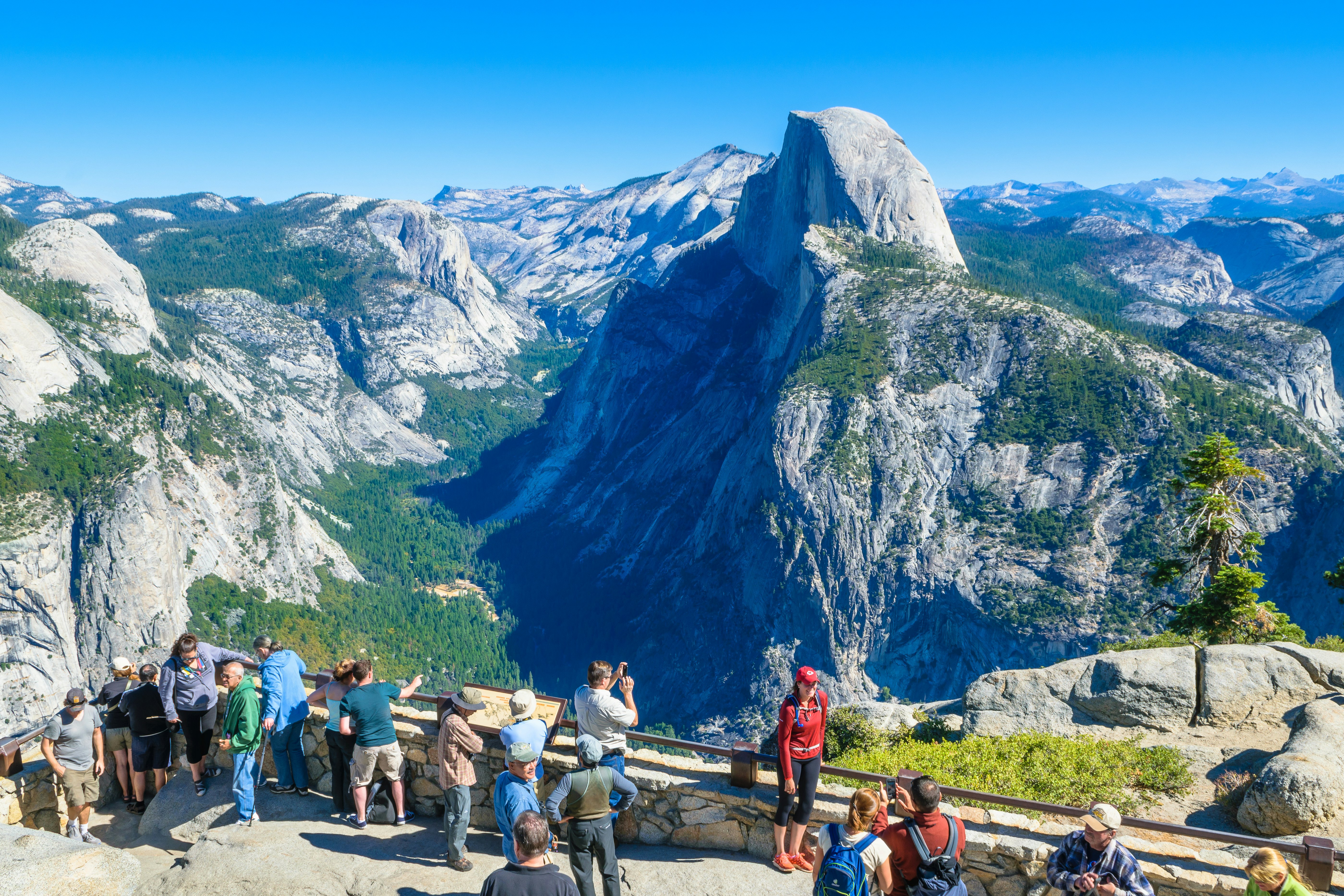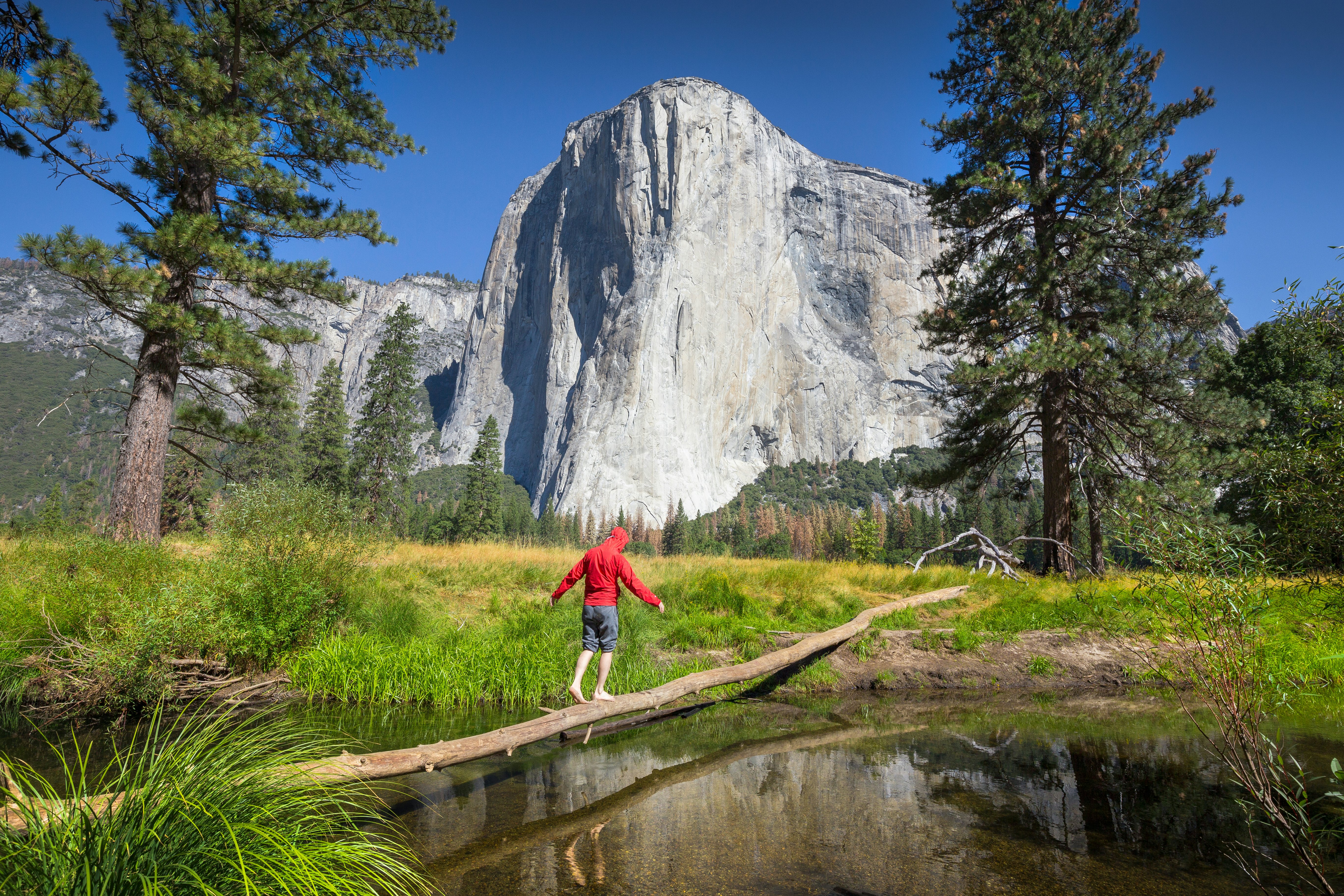
The 30 best countries, cities and regions to visit in 2025

Yosemite is a wonderland of adventures, but don't leave without seeing at least one waterfall © gnohz / Shutterstock
Surrounded by Yosemite’s waterfalls, cliffs and ageless mountains, you truly feel in nature’s thrall. Are the crowds, camping reservations and hiking permit lotteries – all side-effects of the park’s 4 million annual visitors – a headache? Of course. Are Yosemite’s technicolor meadows and vast, abyssal valleys worth it? Ten times over.
More than a national park, Yosemite is a milestone in the story of conservation in the United States. The signing of the Yosemite Grant by President Abraham Lincoln in 1864 is one of the earliest examples of land in the US being preserved and safeguarded as a public good, which paved the way for the national parks system. The activism and lyrical writing of John Muir further embedded Yosemite in the public consciousness; he described it as "the grandest of all the special temples of Nature".
If it’s your first time in Yosemite, you might be inspired to wax poetic, too. You might equally be left tongue-tied by the sheer scale of its 1187 sq miles of forests, coursing rivers and granite domes.
Here’s how to get started on your first-ever foray into Yosemite National Park.

No hyperbole: Yosemite is truly a year-round destination, large and varied enough to keep outdoor-lovers busy even during low season. It’s most popular from spring to fall, with heightened popularity in midsummer.
Unpredictable snow conditions mean the start of spring hiking season varies by the year. But by May, waterfalls are at their magnificent best. Now’s the time to head for 2425ft Yosemite Falls, ideally hiking the tough 3.4-mile trail to the top, and checking out mighty, multi-cascade Sentinel Falls (1920ft) and Ribbon Fall (1612ft).
Peak visiting times, including summer, require preparation. Park reservations are essential from July 1 to mid-August, and on weekends and holidays in spring (mid-April to the end of June) and late summer to fall (mid-August to late October). Check the exact date restrictions and book your pass on the park website. If you don’t have a reservation, set your alarm: you’ll need to enter the park before 5am.
Winter is much quieter, with snow-hushed forests and lighter crowds to compensate for some road closures (like up to Glacier Point, usually closed off from November to early June). But crowds assemble in February for the Yosemite Firefall, when Horsetail Falls are bathed in burnished light, transforming into an infernal cascade that tumbles down the face of El Capitan. On clear days, head to the El Capitan Picnic Area toward twilight to see the spectacle.
You could easily spend a month exploring Yosemite’s trails without tripping over the same boulder twice. But with careful planning you can make the most of a few days – or even 12 hours.
With just one day, you can hit Yosemite’s epic sights on a driving tour and still have enough time for one or two short hikes or bike rides. Head straight to Yosemite Valley, with a stop at iconic Tunnel View to feel vicarious vertigo as you watch climbers making their way up El Capitan.
Rent a bike through Yosemite’s bike-sharing scheme and pedal part-way to Mirror Lake. Back at your car, drive up to Glacier Point for astounding views of Half Dome and yawning Tenaya Canyon.
If you have two days, earn those views by hiking to Glacier Point along the Four Mile Trail. But in late spring, you should devote your second day to the Vernal & Nevada Falls Trail instead, a day-loop of rainbow-spangled waterfalls.
A third day gives you enough time to get under the park’s skin. Spend the morning on a half-day hike in Yosemite Valley, maybe the Cook’s Meadow Loop or Yosemite Falls Trail. Then check out Native American baskets at the Yosemite Museum and see the park through a photographer’s lens at the Ansel Adams Gallery.
Got longer? Lucky you: go deeper into the park on overnight hikes. The holy grail is the strenuous 16-mile Half Dome trail, assuming you’re fortunate enough to get a permit. For a tour de force of the park, the Vogelsang Pass Loop (27 miles) gives you exquisite access to the Cathedral Range, in all its granite glory.

Yosemite is hugely popular, especially from April to early October, so prepare to join the traffic. It’s possible (and highly recommended) to visit without a car by taking a Yarts bus; lines travel from Mammoth Lakes east of the park, Sonora and Merced to the west, and from Fresno (via Oakhurst) to the south. Once you’re in the park, efficient free shuttle services ferry travelers between visitor centers and trailheads.
If you’re self-driving between spring and early fall, it’s essential to plan. Not only does that mean booking a reservation and getting up as early as you can, you should also fill your tank well before you arrive: gas prices just outside the park are astronomical. Once you’re in, be prepared for serpentine roads with hair-raising views and full car parks (tip: get to Glacier Point’s parking lot before 9am). If you’re driving an RV, park outside Yosemite and travel in by bus.
Self-driving becomes less stressful in late fall, when reservation restrictions drop. But there’s a different set of considerations between winter and early spring (November to April): the High Sierra’s fickle weather. Ensure your vehicle is equipped with winter tires (or carry chains, and know how to put them on).

Get as high as you can! Yosemite is all about epic scale so meet these granite domes eye to eye at lofty viewpoints like Glacier Point or better yet, hiking trails that climb to scenic overlooks. If you didn’t win the Half Dome hiking lottery, then the Sentinel Dome & Taft Point Trail is no consolation prize: near-4000ft cliffs are the spine-tingling conclusion to this 5.1-mile (oneway) hike.
Don’t depart without seeing a waterfall, especially in late spring or early summer. Bridalveil Fall, a 620ft cascade that billows in the breeze, is one of the most popular; it’s a short stroll from the parking lot (Wawona Road & Southside Drive). But we love the Yosemite Falls loop hike (7.2 miles round-trip), complete with tough inclines and bracing clouds of waterfall mist.
Then there’s Tuolumne Meadows, the High Sierra’s largest sub-alpine meadow, which usually opens sometime in May. It’s a tapestry of sapphire-blue lakes, lush grasslands and (in spring and summer) a profusion of flowers, all laced with long and short trails. For a short but sweet hike, the Soda Springs and Parsons Lodge Trail is an easy 1.5 mile route. There are more substantial hikes too, like the John Muir Trail to Lyell Canyon (8 miles one-way).
Once I’m giddy from the beauty of Yosemite’s major sights, I love heading onto quieter trails around Wawona. Rambles like the easy Wawona Meadow Loop and the tough but glorious Chilnualna Falls access a dreamy side of the park that many travelers skip. It’s also near Mariposa Grove, and I’m a sucker for gigantic sequoias. Along the Grizzly Giant Loop Trail (2 miles) I like to crane my neck upwards and marvel at oddities like the Clothespin Tree and the California Tunnel Tree…don’t resist, just take the selfie!
Basic costs like entry fees, food and in-park accommodation are comparable to other national parks around the US. Keep costs under control by camping in groups and avoiding last-minute peak season hotels and gas stations close to the park. In late fall, there are accommodation bargains in gateway towns.
park entry fee per car/person: $35/20
round-trip bus fare from Oakhurst to Yosemite Valley: $28
tacos at the Meadow Grill: $10
tent site within the park: $24-36
basic double room at Wawona Hotel: $154
dinner buffet at The Ahwanee Dining Room adult/child: $32/14.50
Ansel Adams Gallery photography walk: free
1hr Glacier Point starry skies program: $20
double room in Oakhurst: $180-250
If you’re traveling at peak times then yes, you need to reserve your Yosemite trip in advance. This includes every day from July to mid-August, and Saturdays, Sundays and holidays between mid-April and the end of June, and from mid-August to late October. Park authorities implemented the system in an attempt to stem the worsening traffic and the environmental impact of the high visitor numbers. Make reservations on the park website.

Enter the west side of the park through Arch Rock entrance (Hwy 140) or Big Oak Flat (Hwy 120 W) or arrive from the east at Tioga Pass (Hwy 120 E). If you’re traveling from the south, the South Entrance is just north of Fish Camp town (Hwy 41). The furthest entrance north is at Hetch Hetchy (Hwy 120), just watch out for seasonal road closures.
Campgrounds in Yosemite are a glorious way to awaken surrounded by the natural majesty and there are 13 to choose from. Favorites include scenic Upper Pines and ideally located Bridalveil Creek Campground, but every single campsite is in hot demand; the best campsite is the one you successfully book. Note that some camps may be off-limits in and around Yosemite Valley during floods in May and June, increasing the competition for spots.
You can also stay in nearby towns. Yosemite Bug Resort, 27 miles from Yosemite Valley, has a range of dorm beds, tent cabins and en-suite rooms at a campsite dating to the 1930s. Charming Mariposa town and Oakhurst, with a lineup of chain hotels and motels, are also convenient for day trippers at around one hour’s drive from the park.
Expect to be hitting "refresh" repeatedly on the recreation.gov website. Sites become available one or two weeks ahead of time, typically at 7am PST, so set your alarm and make sure you’re logged in…options disappear in minutes, sometimes seconds! There is high demand for sites right from the start of camping season in April until October. The reservation system eases off between late fall and early spring: campgrounds like Hodgdon Meadow, Wawona and popular Camp 4 turn into first-come, first-served camping grounds.
Intensifying wildfires, storms and droughts are taking their toll on Yosemite and its surrounding wilderness. Meanwhile increasing footfall in the park puts Yosemite at risk of soil erosion and other damage. But there are ways to minimize your impact: visit in low season, use buses instead of a car, and if you are driving, go slowly (those Red Bear-Dead Bear signs throughout the park are a reminder!) Food should always be stored in bear canisters to ensure you aren’t tempting native black bears to become dependent on human food.
You can even orient your entire trip around protecting Yosemite. The park has drop-in volunteer days, usually on Earth Day (April) and in mid-August, or you can join Yosemite Climbing Association’s Facelift project. If you have a month or more, volunteer positions from researchers and campground attendants are advertised on the NPS website.

Avoid weekends if you can, when crowds are biggest. Try to avoid the worst of the traffic by arriving very early (before 5am) and staying until golden hour (just before twilight): great for photography, and even better for avoiding the exodus from the park before 4pm.
Whether you’re traveling in early spring or late fall, you should pack sunblock and warm layers for your trip to Yosemite National Park. Sunburn happens fast on high-elevation hikes, even outside of peak summer, and sudden cold snaps happen year-round. And trust us, don’t drink water straight from streams and lakes, no matter how sparkling-clean it looks; pack water purification tablets or a Steripen instead.